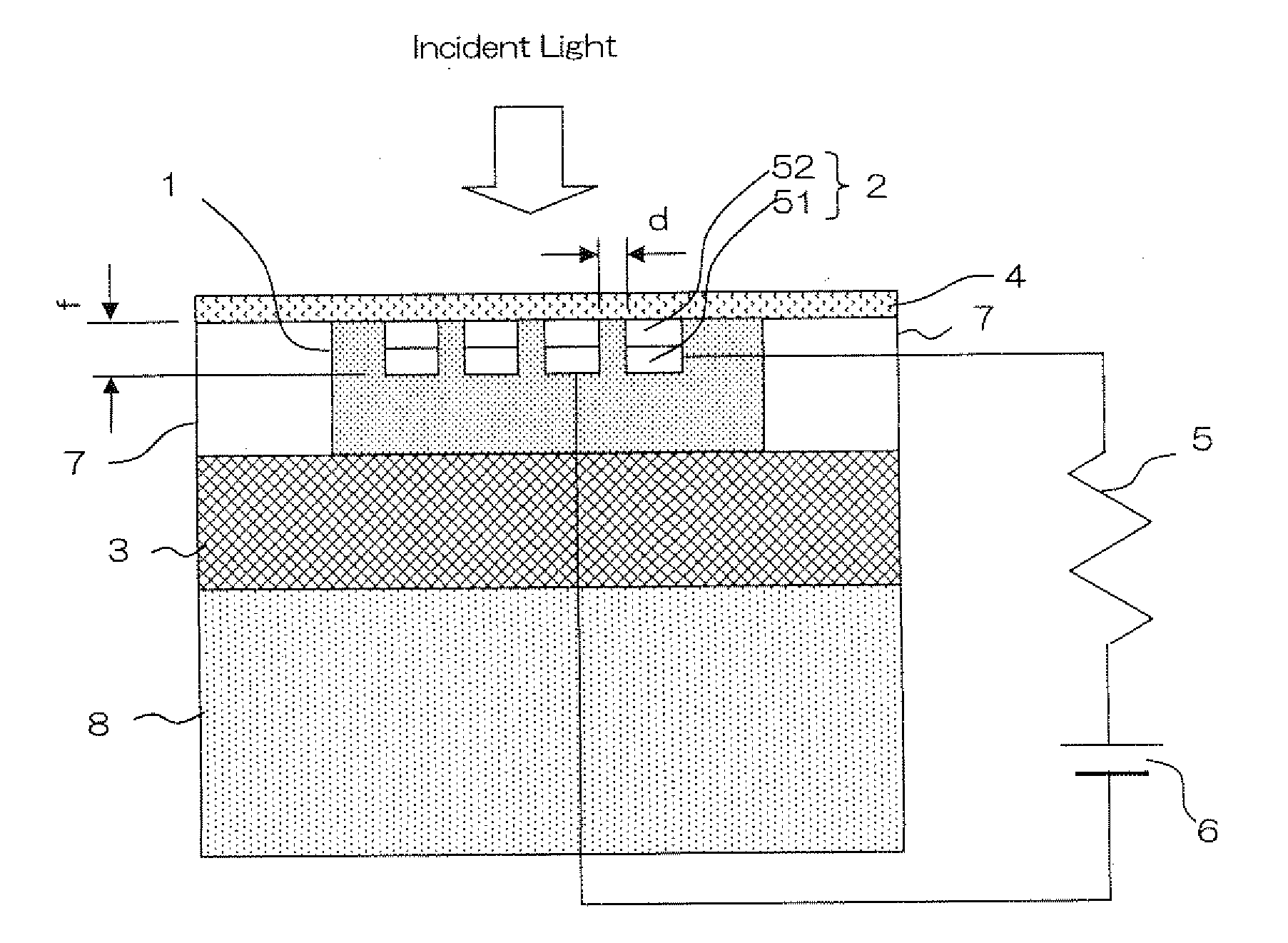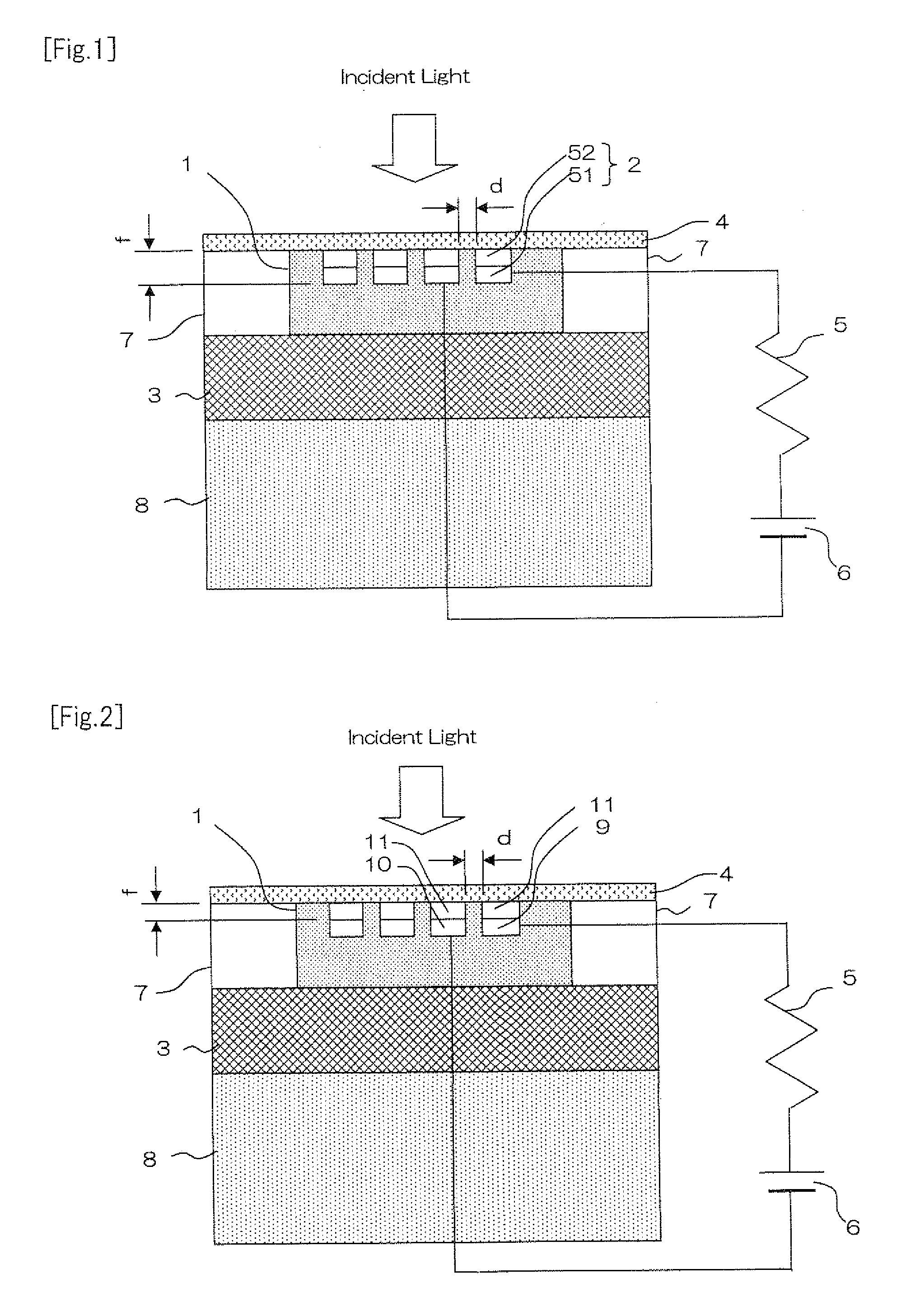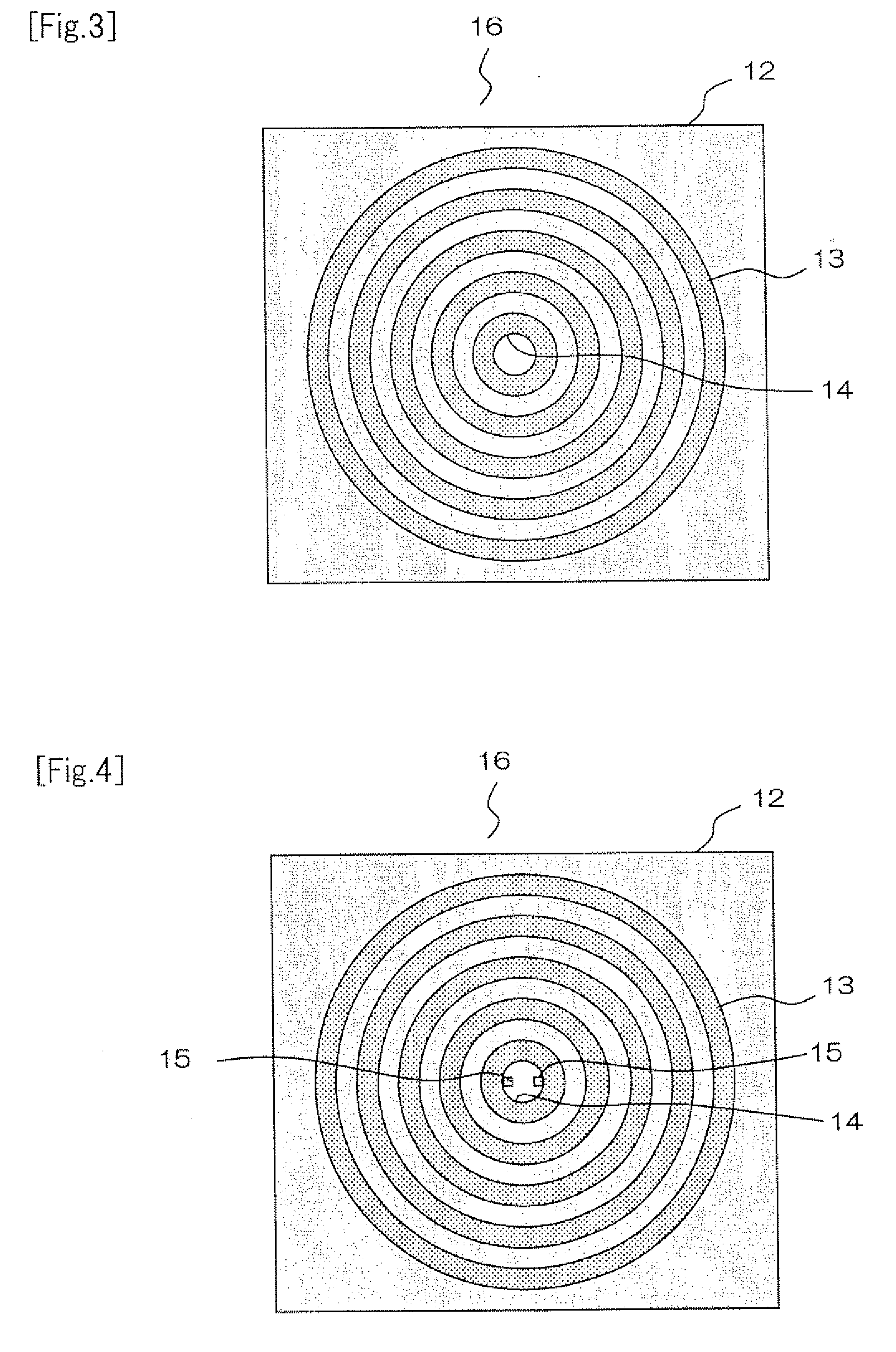Photodiode, method for manufacturing such photodiode, optical communication device and optical interconnection module
a photodiode and photodiode technology, applied in semiconductor/solid-state device manufacturing, semiconductor devices, electrical apparatus, etc., can solve the problems of reducing the utilization efficiency of signal light, reducing the voltage of a reproduced signal that is detected, and difficult to achieve high sensitivity of this structure, etc., to achieve high yield, high efficiency, and efficient conversion of energy into photocarriers
- Summary
- Abstract
- Description
- Claims
- Application Information
AI Technical Summary
Benefits of technology
Problems solved by technology
Method used
Image
Examples
example 1
[0082]FIGS. 7 and 8 are a cross-sectional view and a plan view of an MSM photodiode according to a first example of the present invention, respectively. The MSM type photodiode forms metal-semiconductor-metal (MSM) junctions that are formed on part of semiconductor layer 1 having an insulated surface, such as an SOI (Silicon-on-Insulator). Interval d between metal electrodes 2 is less than wavelength λ of incident light and larger than 1 / 100 λ. Assuming n is the refractive index of semiconductor layer 1, metal electrodes 2 are embedded into semiconductor layer 1 at distance f that is less than λ / 2n measured from the surface of semiconductor layer 1. In order to induce surface plasmon, aluminum, silver, gold or copper or an alloy made up of two or more of the elements aluminum, silver, gold and copper is preferably used for metal electrode 2 (or at least second metal film 52). A seed film made of Cr, Ta, Ni etc. may also be used in order to form a Schottky junction. Furthermore, a se...
example 2
[0084]FIG. 10 is a cross-sectional view of a photodiode according to a second example of the present invention. Schottky electrodes 22 forming a Schottky junction are arranged at interval d on the surface of semiconductor layer 1. Schottky electrodes 22 are made of a conductive material that is capable of inducing surface plasmon. Opposite electrode layer 23 is formed on the side of base substrate 8 via a depletion layer (semiconductor layer 1) which serves as a light absorbing layer. Interval d of Schottky electrodes 22 is less than light wavelength 1. Assuming that n is the refractive index of semiconductor layer 11 Schottky electrodes 22 are embedded into semiconductor layer 1 at distance f that is less than λ / 2n.
[0085]An n+-Si layer that includes a dopant, such as P, with a dopant concentration of 1×1020 cm−3 or more may be used as opposite electrode layer 23 and an n-Si layer which serves as a light absorbing layer may be used as semiconductor layer 1. Semiconductor layer 1 req...
example 3
[0087]FIG. 11 is a cross-sectional view of a photodiode according to a third example of the present invention. A stack in which metal film 11 is deposited on p electrode 9 or n electrode 10 is disposed on the surface of semiconductor layer 1, forming at least one p-i-n junction. Interval d of metal films 11 deposited on p electrode 9 or n electrode 10 is designed to be less than wavelength λ of incident light and to be greater than 1 / 100 λ. Metal film 11 is made of a conductive material that is capable of inducing surface plasmon and metal film 11 is embedded into semiconductor layer 1 at distance f that is less than λ / 2n measured from the surface of semiconductor layer 1, where n is the refractive index of semiconductor layer 1. Metal film 11 is preferably made up of aluminum, silver, gold or copper or an alloy made up of two or more of the elements aluminum, silver, gold and copper in order to induce surface plasmon.
[0088]In order to manufacture the photodiode of this example, fir...
PUM
 Login to View More
Login to View More Abstract
Description
Claims
Application Information
 Login to View More
Login to View More - R&D
- Intellectual Property
- Life Sciences
- Materials
- Tech Scout
- Unparalleled Data Quality
- Higher Quality Content
- 60% Fewer Hallucinations
Browse by: Latest US Patents, China's latest patents, Technical Efficacy Thesaurus, Application Domain, Technology Topic, Popular Technical Reports.
© 2025 PatSnap. All rights reserved.Legal|Privacy policy|Modern Slavery Act Transparency Statement|Sitemap|About US| Contact US: help@patsnap.com



